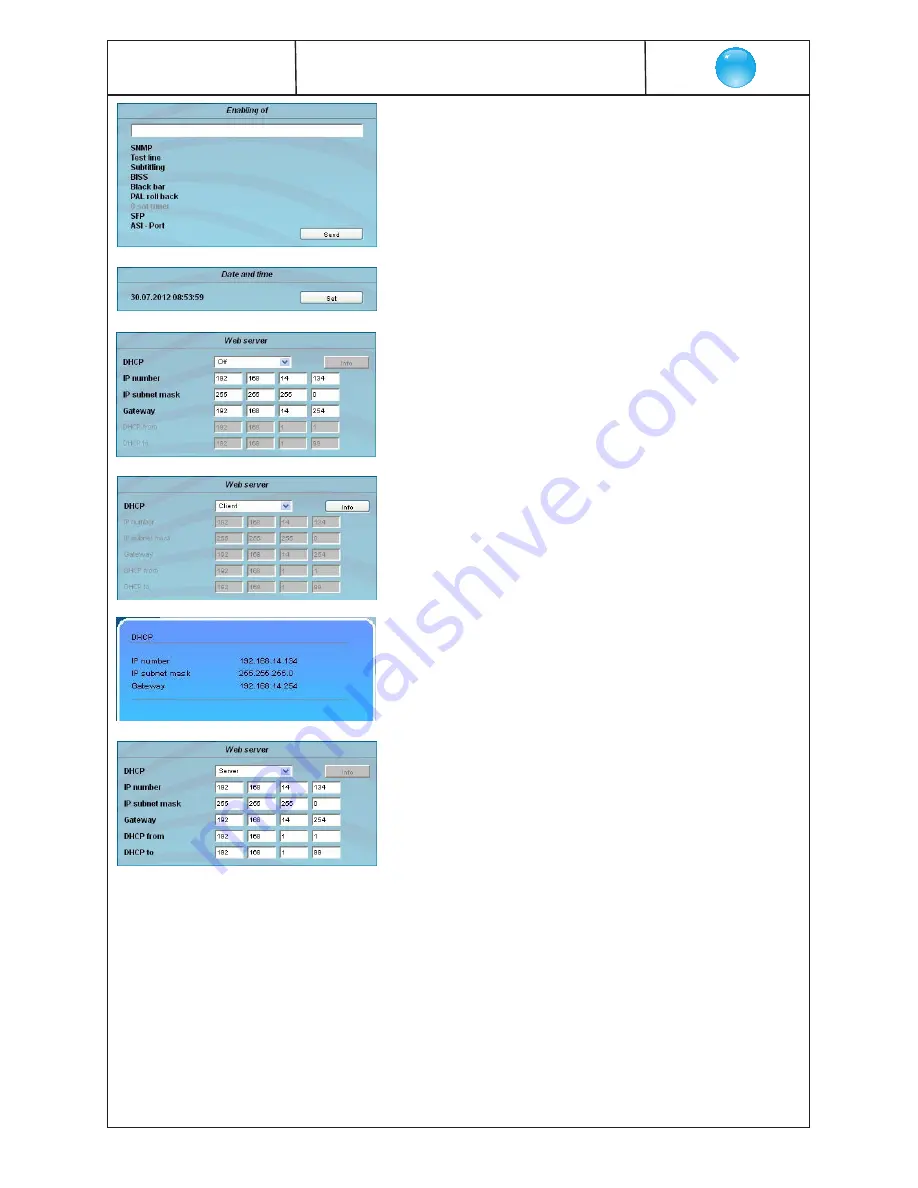
18
PALIOS-IPM2
Part N
o
: 5105.01
8 pole IP-/ ASI-TV Modulator
IP/ SFP/ ASI (MPEG2)
→
ATV (8x AM)
SBL
Enabling of
In this field, possible software options for the PALIOS-IPM2 module can be
enabled. The registration code must be entered in the input field and by pressing
the “Send“ button the option will be activated. Activated options are displayed in
black, inactive are grayed out.
note
To convert a PALIOS-IPM2 into a QAMOS-IP, the option “PAL roll back“ must be
active to perform the update process (see System administration
→
update).
Date and time
Clicking on the “Set“ button, the date and time will be set to that of the PC.
Web server
This setting appears only when you are logged in as administrator, and thus you
have the authority to make administrative changes.
The PALIOS-IPM2 supports the DHCP functionality. DHCP-Client is factory default.
Note, that after each factory reset the PALIOS-IPM2 is set “DHCP-Client“.
If the
DHCP functionality
is set to
“Off“
, in the appropriate fields the IP number,
subnet mask and gateway can be manually entered and then the settings of the
PALIOS-IPM2 module are adapted to the network.
If the module is set as
“DHCP-Client“
, it automatically obtains an IP address
from the DHCP server on the network. The manual network settings are grayed
out and are therefore disabled.
By pressing the “Info“ button the automatically assigned network configuration of
the module is displayed.
Please note if the module is set as
“DHCP-Server“
, that the IP address
192.168.1.100 should not be set. If you select this address, you will get an error
message. In addition to the IP settings you can configure the DHCP range from
which the IP addresses of the connected clients are assigned. The address
range must match the address range according to IP address and subnet mask
of the server and should not be too small. The default is the area 192.168.1.1
to 192.168.1.99. Additonally with the DHCP server will also set up a local DNS
(Domain Name Server). To use it in full extent a connected PC/ laptop must be
configured as a DHCP client. Please note, that the client unit not only get its IP
address from the DHCP server, but also its DNS server.
If the module is configured as a DHCP server or client and the client has received an IP address successfully, so module can be
accessed via a web browser using its name. This name is composed of the prefix “sbl“ and the device number that is printed on the
back of the module and on the packaging. For example, the device with the number 0123456 can be called under “sbl0123456“.
Should there be problems with it among the local network conditions, the domain can be added. In the case that the above module is
configured as a server, the call using the domain is then “sbl0123456.sbl“. If another DHCP server is used, ask your administrator for
the domain name.
An example of the simplification of the configuration or operation of the head end via DHCP, is, that an SBL module is as a server, the
remaining modules and the connected PC/ laptop are configured as a client. By calling the browser “dhcp.sbl“ the GUI of the server
module is loaded. If not already done so, now the head end can be read. So all connected components are found and listed. The
head end can now be stored in the “Setup“ menu under the item “System administration“. The head end overview can be changed
quickly to the user interface of any other module by selecting the respective modules links.









































